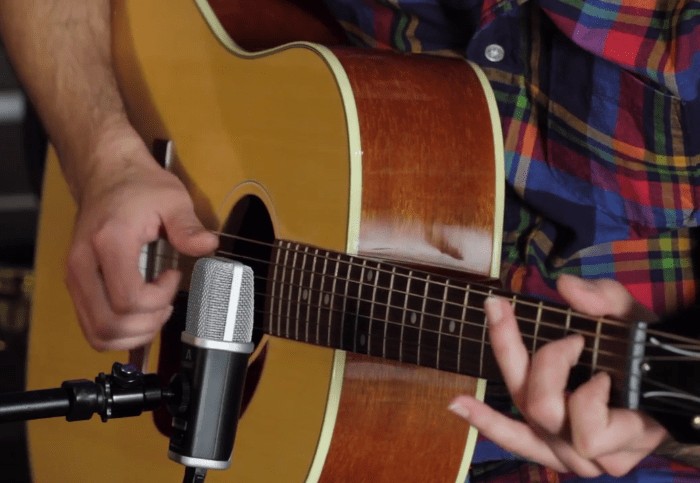One of the most common questions aspiring guitarists ask is, “Can You Learn Guitar On Electric?” This comprehensive guide addresses this question and debunks common myths surrounding the electric vs. acoustic debate for beginners. We’ll explore the pros and cons of each, helping you make an informed decision about your first guitar.
Myth 1: Acoustic Guitar First is a Must
A persistent myth suggests beginners should start with acoustic guitar before transitioning to electric. The logic is that acoustic guitars are harder to play, making the switch to electric easier. While there’s some truth to the increased difficulty of acoustic playing, starting on electric doesn’t hinder your ability to play acoustic later. The core techniques, chord shapes, and hand positioning are largely transferable. Minor adjustments in string pressure and finger spacing might be needed, but the foundational skills remain the same. Choose the instrument that inspires you the most, as motivation is key to learning.
Myth 2: Electric Guitars Require an Amp to Be Heard
While an amplifier enhances the electric guitar experience, it’s not essential for practice. Unplugged electric guitars are quieter than acoustics, but still audible. This allows for silent practice, making electric guitars suitable for apartment living or late-night sessions. While an amp is recommended for performance and fully experiencing the electric guitar’s capabilities, it shouldn’t be a barrier to entry for beginners.
Myth 3: Classical Guitar is the Ideal Starting Point
Classical guitars, with their wider necks and nylon strings, are often associated with formal classical training. While excellent for classical and flamenco styles, they might not be the best choice for learning popular music. If your goal is to play rock, blues, or pop, starting with an electric or steel-string acoustic guitar is more appropriate. Choose the instrument that aligns with your musical aspirations.
Electric Guitar: Pros and Cons
Pros:
- Easier on the Fingers: Lighter strings require less pressure, making initial learning more comfortable.
- Lead Guitar Techniques: Bending, tapping, and other lead techniques are more easily executed on electric guitars.
- Band-Friendly: Electric guitars are the cornerstone of most band settings.
- Versatile Sound: Effects pedals and amplifier settings allow for a wide range of sonic exploration.
Cons:
- Amplifier Requirement: An amplifier is necessary for performance and optimal sound projection.
- Slight Adjustment for Acoustic: Minor adjustments in technique are needed when switching to acoustic guitar.
- Weight: Despite smaller bodies, electric guitars can be heavier than some acoustic guitars.
Acoustic Guitar: Pros and Cons
Pros:
- Direct Playing Experience: No amplifier is needed to produce sound, allowing for immediate playing gratification.
- Suitable for Gatherings: Ideal for unplugged performances and casual playing in social settings.
- Fingerstyle Friendly: Well-suited for fingerpicking patterns and certain acoustic styles.
- Foundation for Electric: The transition to electric can be relatively smooth after mastering acoustic techniques.
Cons:
- Higher String Tension: Requires more finger strength and can be initially challenging for beginners.
- Limited Lead Techniques: Certain techniques like string bending are more difficult on acoustic guitars.
- Less Versatile Sound: The acoustic sound is more natural and less adaptable than electric guitars.
Choosing the Right Guitar: Final Thoughts
Ultimately, the best guitar for beginners is the one that inspires and motivates them to play. Consider your musical goals, preferred genres, and playing style. Investing in a quality instrument you’re proud to own will significantly enhance your learning journey.

